LeeAnne Gullett
LeeAnne is a Certified Athletic Trainer and Certified Athletic Therapist. She is a member of the National Athletic Trainer’s Association and the Canadian Athletic Therapist’s Association. She has a vast interest in Patient Education and making orthopedic care a smooth transition for patients. LeeAnne obtained her Bachelors of Science in Athletic Training and Health Science at Castleton University in Vermont. She practiced as a Certified Athletic Trainer in the states for 6 years with various sports teams and orthopedic clinics (NECBL, Dartmouth Hitchcock, Vermont Orthopedic Clinic to name a few). She then went on to pursue her Master’s Degree in Exercise Physiology at Mercyhurst University. While in Erie, PA she worked as a Division I Women’s Ice Hockey ATC where going to the Frozen Four was one of her favourite memories. LeeAnne now resides in Canada and is the Director of Reconditioning and Performance at Acumen Health.
Navigating life after a major orthopedic injury and surgery (anterior cruciate ligament or rotator cuff surgery, etc.) can be challenging not only physically but also mentally. Athletic Therapists are healthcare professionals who specialize in musculoskeletal injury and post-surgical care and rehabilitation. We take all aspects of rehabilitation (shoulder surgery, knee surgery, elbow surgery, etc.) into consideration from preoperative care to full return to activity and thereafter. Athletic Therapists connect with patients to understand them personally, and to help them overcome physical barriers and reach their goals throughout the rehab process. Athletic Therapist do this by paying close attention to the following:
Early rehab preparation
Athletic Therapists are aware of pre-op anxiety that may be present prior to surgery and can play an important role in patient reassurance and guidance. We outline expectations so that patients understand what they will be going through along their rehab progression. It’s important to set patients up for success, and allow them to prepare as best they can prior to surgery. Athletic Therapists can provide important information like comfortable sleeping arrangements or how to use crutches in advance of a procedure. We may begin patients on a prehab program. Prehab exercises are exercises related to a specific condition that are completed leading up to surgery. This early strength and range of motion work can assist in the outcome and help patients as they prepare for surgery.
Athletic Therapists have a vast knowledge of post-op healing stages and processes. They can facilitate this process with proper therapy and movement. The early post-op phase is known as the “acute” or “inflammatory” phase. This phase can be painful. Our main role is to help decrease pain, promote patient confidence with education, and work on passive range of motion.
It is common for an Athletic Therapist to prescribe at-home exercises to help the patient progress and to continue to take steps forward. Due in part to our understanding and knowledge of rehab phases, we know when areas are not progressing as well as they should, and if they need to be addressed by the surgeon sooner rather than later (infection, cyclops lesion, etc.).
Developing a goal based recovery plan
When treating active individuals, it is important to ask them what their big-picture goals are, and not just their “rehab” goals. It’s easy to get fixated on rehabbing an injury, but we also want to consider these big picture goals (ie. skiing competitively, return to boxing, etc.) and how we may incorporate speed development or improving pre-existing sport-based or functional weaknesses into our overall plan of care.
This leads us to the next priority of an Athletic Therapist – treat the whole body and not just the injury. When recovering from surgery it is often easy to focus on what is painful and/or what ailments require the most care and attention. Athletic Therapists may also help increase overall/full-body strength and development. Treating the whole body helps to improve overall confidence in the patient/client and promotes healthy habits post-injury.
Assessing not guessing
For Athletic Therapists making informed decisions about patient recovery is key. That means assessing both physical and mental progress and barriers.
Physical preparedness
When working with athletes, both professional and recreational, it’s important to take measurements (circumference, jump distances, physical performance/strength testing) and compare the surgical side to the non-surgical side (limb symmetry). This is a great indicator if someone can return to sport after having gone through all the rehab phases. These rehab phases (depending on the surgery) can take anywhere from 4-12 months.
Mental Preparedness
Despite potentially great limb symmetry and performance testing, it is just as important for an athlete to feel confident and ready to return to pre-surgery activities! High levels of anxiety before and after surgery may cause hardships, making the rehab process feel slow and difficult. Knowing this, we go back to the beginning – patient reassurance and building a support system. Athletic Therapists treat the whole person and sometimes this means treating mental barriers as well. We have the awareness to recognize and refer if patients need more than what we can offer. Athletic Therapists love collaboration and anything to help an individual overcome barriers!
Knowing these main focuses, an Athletic Therapist might be your key to post-surgical success. We want patients to succeed from beginning to end, and to continue giving them the tools they need to avoid reinjury. Returning patients back to what they love to do is a great part of our role, we take it seriously and will do our best to get patients back to living a healthy active life.

